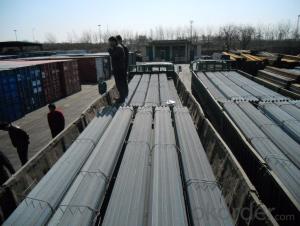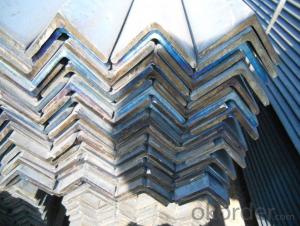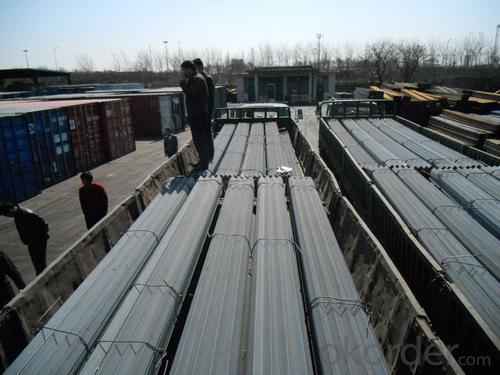Structure Steel Equal Angle
- Loading Port:
- China Main Port
- Payment Terms:
- TT or LC
- Min Order Qty:
- -
- Supply Capability:
- -
OKorder Service Pledge
OKorder Financial Service
You Might Also Like
Product Description:
OKorder is offering Structure Steel Hot Rolled Angle Bar at great prices with worldwide shipping. Our supplier is a world-class manufacturer of steel, with our products utilized the world over. OKorder annually supplies products to European, North American and Asian markets. We provide quotations within 24 hours of receiving an inquiry and guarantee competitive prices.
Product Applications:
Trusses;
Transmission towers;
Telecommunication towers;
Bracing for general structures;
Stiffeners in structural use.
Product Advantages:
OKorder's Structure Steel Hot Rolled Angle Bar are durable, strong, and resist corrosion.
Main Product Features:
· Premium quality
· Prompt delivery & seaworthy packing (30 days after receiving deposit)
· Corrosion resistance
· Can be recycled and reused
· Mill test certification
· Professional Service
· Competitive pricing
Product Specifications:
1.Standards:GB,ASTM,BS,AISI,DIN,JIS
2.Invoicing on theoretical weight or actual weight as customer request
3.Material: JIS G3192,SS400;SS540.
4. Payment terms:
1).100% irrevocable L/C at sight.
2).30% T/T prepaid and the balance against the copy of B/L.
3).30% T/T prepaid and the balance against L/C
5.Sizes:
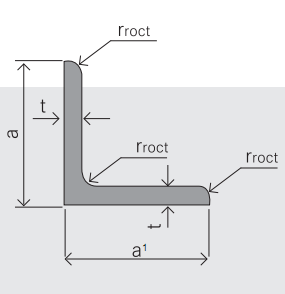
EQUAL ANGLES SIZES |
| ||
a(mm) | a1(mm) | thickness(mm) | length |
25 | 25 | 2.5---3.0 | 6M/12M |
30 | 30 | 2.5---4.0 | 6M/12M |
38 | 38 | 2.5 | 6M/12M |
38 | 38 | 3.0---5.0 | 6M/12M |
40 | 40 | 3.0---6.0 | 6M/12M |
50 | 50 | 3 | 6M/12M |
50 | 50 | 3.7---6.0 | 6M/9M/12M |
60 | 60 | 5.0---6.0 | 6M/9M/12M |
63 | 63 | 6.0---8.0 | 6M/9M/12M |
65 | 65 | 5.0---8.0 | 6M/9M/12M |
70 | 70 | 6.0---7.0 | 6M/9M/12M |
75 | 75 | 5.0---10.0 | 6M/9M/12M |
80 | 80 | 6.0---10.0 | 6M/9M/12M |
90 | 90 | 6.0---10.0 | 6M/9M/12M |
100 | 100 | 6.0---12.0 | 6M/9M/12M |
120 | 120 | 8.0-12.0 | 6M/9M/12M |
125 | 125 | 8.0---12.0 | 6M/9M/12M |
130 | 130 | 9.0-12.0 | 6M/9M/12M |
140 | 140 | 10.0-16.0 | 6M/9M/12M |
150 | 150 | 10---15 | 6M/9M/12M |
160 | 160 | 10---16 | 6M/9M/12M |
180 | 180 | 12---18 | 6M/9M/12M |
200 | 200 | 14---20 | 6M/9M/12M |
6. Material Specifications:
Grade | Yield Strength,N/mm² | Extension Strength N/mm² | |||
Thickness of Steel,mm | |||||
≦16 | >16-≦40 | >40-≦100 | >100 | ||
SS330 | ≧205 | ≧195 | ≧175 | ≧165 | 330-430 |
SS400 | ≧245 | ≧235 | ≧215 | ≧205 | 400-510 |
SS490 | ≧285 | ≧275 | ≧255 | ≧245 | 490-610 |
SS540 | ≧400 | ≧390 | - | - | ≧540 |
Packaging & Delivery of Angle Steel
1. Transportation: the goods are delivered by truck from mill to loading port, the maximum quantity can be loaded is around 40MTs by each truck. If the order quantity cannot reach the full truck loaded, the transportation cost per ton will be little higher than full load.
2. With bundles and load in 20 feet/40 feet container, or by bulk cargo, also we could do as customer's request.
3. Marks:
Color mark: There will be color marking on both end of the bundle for the cargo delivered by bulk vessel. That makes it easily to distinguish at the destination port.
Tag mark: There will be tag mark tied up on the bundles. The information usually including supplier logo and name, product name, made in China, shipping marks and other information request by the customer.
If loading by container the marking is not needed, but we will prepare it as customer request.
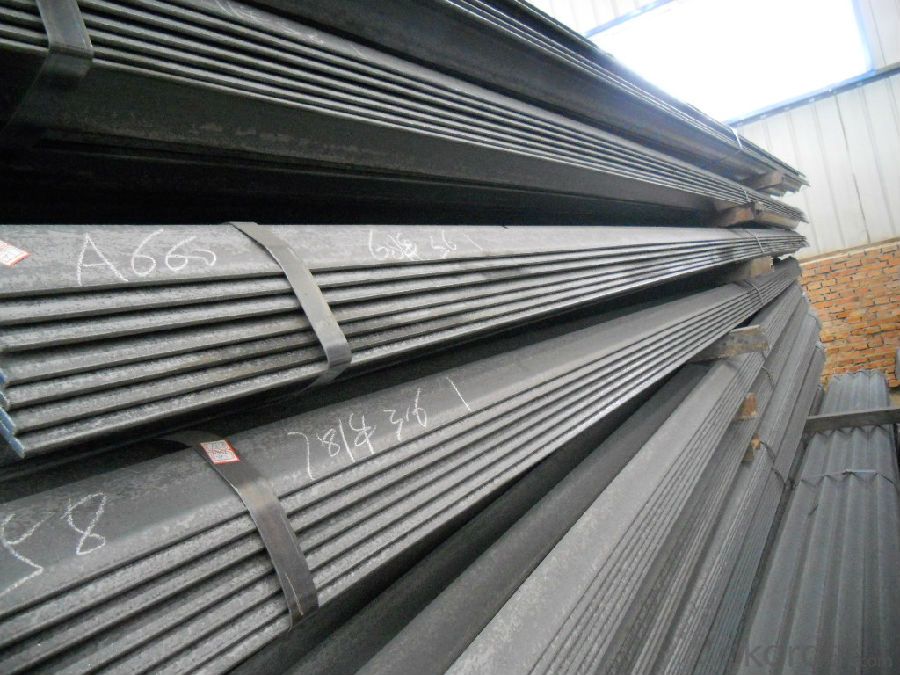
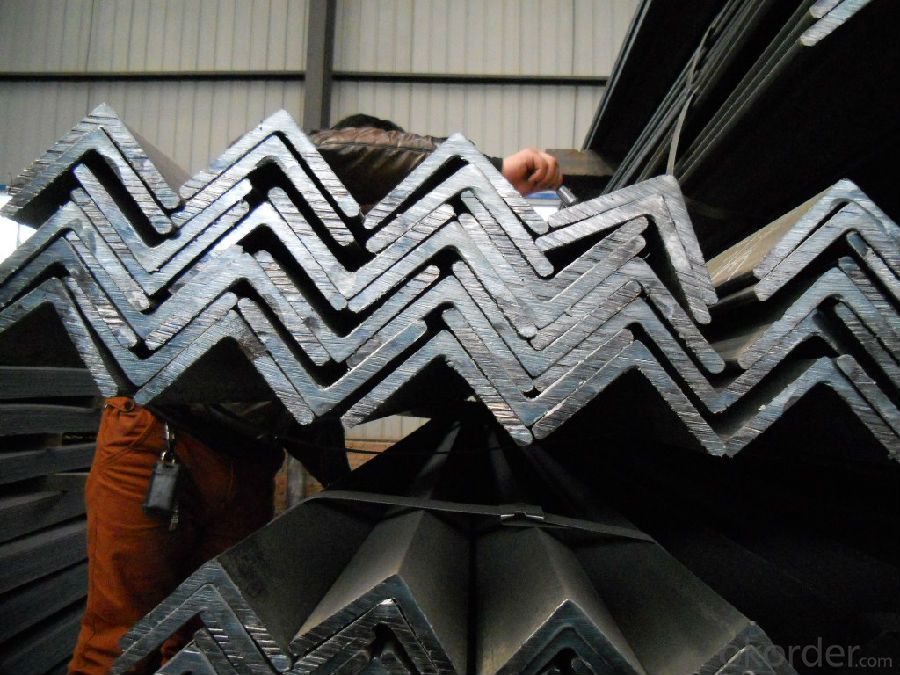
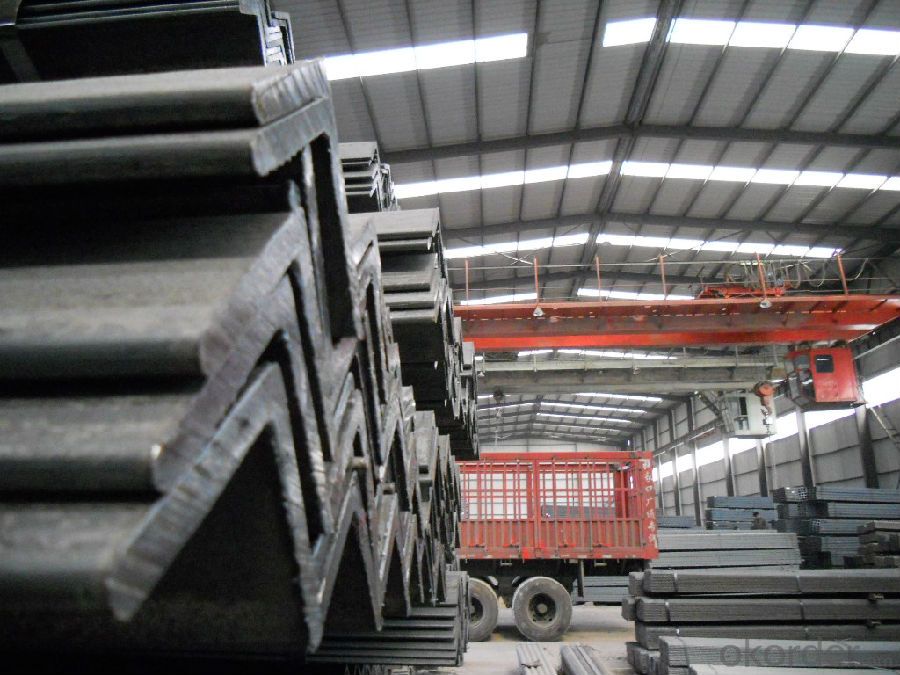
FAQ:
Q1: Why buy Materials & Equipment from OKorder.com?
A1: All products offered byOKorder.com are carefully selected from China's most reliable manufacturing enterprises. Through its ISO certifications, OKorder.com adheres to the highest standards and a commitment to supply chain safety and customer satisfaction.
Q2: How do we guarantee the quality of our products?
A2: We have established an advanced quality management system which conducts strict quality tests at every step, from raw materials to the final product. At the same time, we provide extensive follow-up service assurances as required.
Q3: How soon can we receive the product after purchase?
A3: Within three days of placing an order, we will begin production. The specific shipping date is dependent upon international and government factors, but is typically 7 to 10 workdays.
Q4: What makes stainless steel stainless?
A4: Stainless steel must contain at least 10.5 % chromium. It is this element that reacts with the oxygen in the air to form a complex chrome-oxide surface layer that is invisible but strong enough to prevent further oxygen from "staining" (rusting) the surface. Higher levels of chromium and the addition of other alloying elements such as nickel and molybdenum enhance this surface layer and improve the corrosion resistance of the stainless material.
- Q: How do steel angles compare to other structural materials?
- Due to their versatility and strength, steel angles are widely favored in the construction industry. In comparison with alternative structural materials like wood or aluminum, steel angles present several benefits. To begin with, steel angles possess exceptional strength and load-bearing capacity. They are capable of supporting heavy loads and ensuring structural stability, making them ideal for implementation in infrastructure projects such as buildings and bridges. Furthermore, steel angles exhibit a high resistance to bending and twisting, guaranteeing durability and longevity across various applications. Moreover, steel angles offer remarkable versatility. They can be easily customized and fabricated into different shapes and sizes, facilitating precise and efficient construction. This flexibility empowers designers and engineers to create intricate structures and achieve specific architectural requirements. Additionally, steel angles provide outstanding fire resistance compared to materials like wood. Steel is non-combustible, meaning it does not contribute to the spread of fire, thereby rendering it a safer option for buildings and structures. Furthermore, steel angles boast a high rate of recyclability, making them environmentally friendly. Steel stands as one of the most recycled materials globally, and implementing steel angles in construction contributes to sustainable building practices while reducing the demand for fresh raw materials. Nevertheless, it should be noted that steel angles can be pricier than certain alternative materials like wood or aluminum. Furthermore, steel necessitates appropriate surface treatment and corrosion protection to prevent rusting and maintain its structural integrity. In conclusion, steel angles present numerous advantages over alternative structural materials, including superior strength, versatility, fire resistance, and recyclability. These characteristics establish them as a favored choice in numerous construction projects where durability, efficiency, and safety hold utmost importance.
- Q: What are the different grades of steel used for angles?
- The different grades of steel commonly used for angles include A36, A572, and A588.
- Q: Can steel angles be used in the construction of staircases?
- Yes, steel angles can be used in the construction of staircases. Steel angles are commonly used as structural components in construction due to their strength and versatility. In the case of staircases, steel angles can be used to provide support and stability to the overall structure. They can be used to create the framework for the stairs, supporting the treads and risers. Additionally, steel angles can be used as handrails or guardrails, providing a sturdy and secure grip for users. Overall, steel angles are a popular choice for constructing staircases due to their durability, load-bearing capacity, and aesthetic appeal.
- Q: What are the different methods of corrosion protection for steel angles?
- Steel angles can be protected from corrosion through various methods, each having its own advantages and disadvantages. 1. Protective coatings are commonly used to safeguard steel angles. These coatings include paint, epoxy, and galvanization. Paint creates a barrier that prevents moisture and oxygen from reaching the steel surface. Epoxy coatings offer a more robust layer, providing enhanced corrosion protection. Galvanization involves applying a zinc layer to act as sacrificial protection, corroding before the steel. 2. Cathodic Protection utilizes an external electrical current to safeguard steel angles. By connecting the steel to a more easily corroded metal, such as zinc or magnesium, and applying direct current, the less noble metal corrodes instead of the steel. This method is beneficial in marine or underground environments. 3. Alloying can also protect steel angles from corrosion. By adding small amounts of metals like chromium or nickel to the steel composition, the resulting alloy forms a protective oxide layer on the surface, preventing further corrosion. Stainless steel is an excellent example of an alloy with high corrosion resistance. 4. Barrier Films create a physical barrier on the steel surface to prevent corrosion. This method involves applying films like polyethylene or PVC, which block moisture and oxygen from reaching the steel. It is commonly used in environments with harsh conditions or chemicals. 5. Environmental Control is another way to prevent corrosion. By controlling the environment in which the steel angles are placed, exposure to moisture, humidity, and corrosive chemicals can be minimized. Proper ventilation, regular cleaning, and maintaining a dry environment contribute to corrosion prevention. It is important to consider several factors, such as the specific application, environmental conditions, and budget constraints, to determine the most suitable corrosion protection method for steel angles. Consulting corrosion experts or engineers is recommended for a tailored approach.
- Q: Are there any limitations or restrictions on the use of steel angles in certain applications?
- Yes, there are limitations and restrictions on the use of steel angles in certain applications. These restrictions mainly depend on the specific engineering requirements, load bearing capacity, and structural stability needed for the application. Additionally, factors such as the type of project, environmental conditions, and building codes and regulations may also impose limitations on the use of steel angles. It is important to consult with a structural engineer or an industry professional to ensure proper selection and usage of steel angles for specific applications.
- Q: How do steel angles perform under extreme temperatures?
- Steel angles typically perform well under extreme temperatures. Steel is known for its high thermal conductivity, which means it can quickly absorb and distribute heat. This property helps steel angles to withstand extreme temperatures without significant deformation or failure. However, it is important to note that the specific performance of steel angles under extreme temperatures can vary depending on factors such as the alloy composition and heat treatment of the steel. In some cases, steel angles may experience reduced strength or become more susceptible to corrosion at extremely high temperatures. It is recommended to consult with a materials engineer or refer to the manufacturer's specifications to determine the specific performance of steel angles under the desired extreme temperature conditions.
- Q: What are the different types of connections used for steel angles in educational institutions?
- There are several types of connections commonly used for steel angles in educational institutions. These include bolted connections, welded connections, and clip angles. Bolted connections involve using bolts and nuts to secure the steel angles together. Welded connections, on the other hand, involve fusing the steel angles together using heat. Clip angles are small pieces of steel that are used to connect and reinforce the steel angles. Each type of connection has its own advantages and disadvantages, and the choice depends on factors such as the load requirements, cost, and construction method.
- Q: Can steel angles be used for fencing and gate construction?
- Yes, steel angles can be used for fencing and gate construction. Steel angles are commonly used in construction projects due to their strength and durability. They provide a strong framework for fencing and gate structures, offering support and stability. Steel angles can be easily welded or bolted together to form the desired shape and size for fencing and gate construction. Additionally, steel angles have a high resistance to corrosion, making them suitable for outdoor applications. Overall, steel angles are a versatile and reliable choice for fencing and gate construction.
- Q: What are the different types of steel angles connections for columns?
- There are several different types of steel angle connections that can be used for columns in construction. 1. Bolted Angle Connection: This is a commonly used connection where steel angles are bolted together to form a joint. The angles are usually attached to the column using bolts and plates, providing a strong and reliable connection. 2. Welded Angle Connection: In this type of connection, the steel angles are welded directly to the column. Welded connections offer excellent strength and stiffness, making them suitable for heavy-duty applications. 3. Gusset Plate Connection: A gusset plate is a flat plate that is attached to the column and the steel angles to form a connection. The gusset plate is usually bolted or welded to provide additional strength and stability. 4. Cleat Connection: A cleat is a small piece of steel that is bolted or welded to the column and the steel angles. Cleat connections are commonly used for smaller columns and provide a simple and cost-effective solution. 5. Moment Connection: A moment connection is designed to resist both axial and bending loads. It involves welding or bolting steel angles to the column, along with additional reinforcing plates and stiffeners to provide the required strength and rigidity. 6. Eccentric Connection: An eccentric connection is used when the load is applied off-center to the column. It involves attaching the steel angles to the column at an offset position to account for the eccentric load. Overall, the choice of steel angle connection for columns depends on factors such as the load requirements, structural design, and construction methods. It is important to consider the specific needs of the project and consult with a structural engineer to determine the most appropriate connection type.
- Q: Can steel angles be used for manufacturing ladders?
- Yes, steel angles can be used for manufacturing ladders. Steel angles provide strength and stability, making them suitable for ladder construction. They can be used as ladder rungs, supports, or even the main structure of the ladder.
Send your message to us
Structure Steel Equal Angle
- Loading Port:
- China Main Port
- Payment Terms:
- TT or LC
- Min Order Qty:
- -
- Supply Capability:
- -
OKorder Service Pledge
OKorder Financial Service
Similar products
Hot products
Hot Searches
Related keywords
